The 4 C's & Beyond - A Diamond Purchaser's Guide
Understanding the 4 C's & Beyond - Become an Informed Diamond Purchaser!
With potentially millions of engagement ring styles & diamonds to choose from, where do you start? Right here, with us. Our diamond specialists have been helping couples find the perfect ring for over 100 years Before we begin to tackle the tough questions, it’s important to remember that not all diamonds are created equal.
While we have done our best to compile some important information about selecting a diamond, a true understanding of a diamond's quality & characteristics takes time, research & a well-educated jeweler.
Select A Diamond Shape
Often the first step in choosing an engagement ring is determining the shape ( round, pear, oval, etc.) of the diamond you like best.
Shape describes a diamond's form, primarily as viewed from above; and although a round, or brilliant-cut, diamond is the most popular, there are many others to consider, such as oval, pear-shaped, princess-cut, emerald-cut, radiant, and cushion-cut;
The shape is one of personal taste and once that has been determined, you can move into discovering the 4 C's of the diamond.
Did you know that the shape of diamond you prefer may reveal something about your personality, style or love life? Take a moment to read about each shape, their special characteristics & what your choice in diamond shape reveals about you!
Diamond Carat Weight
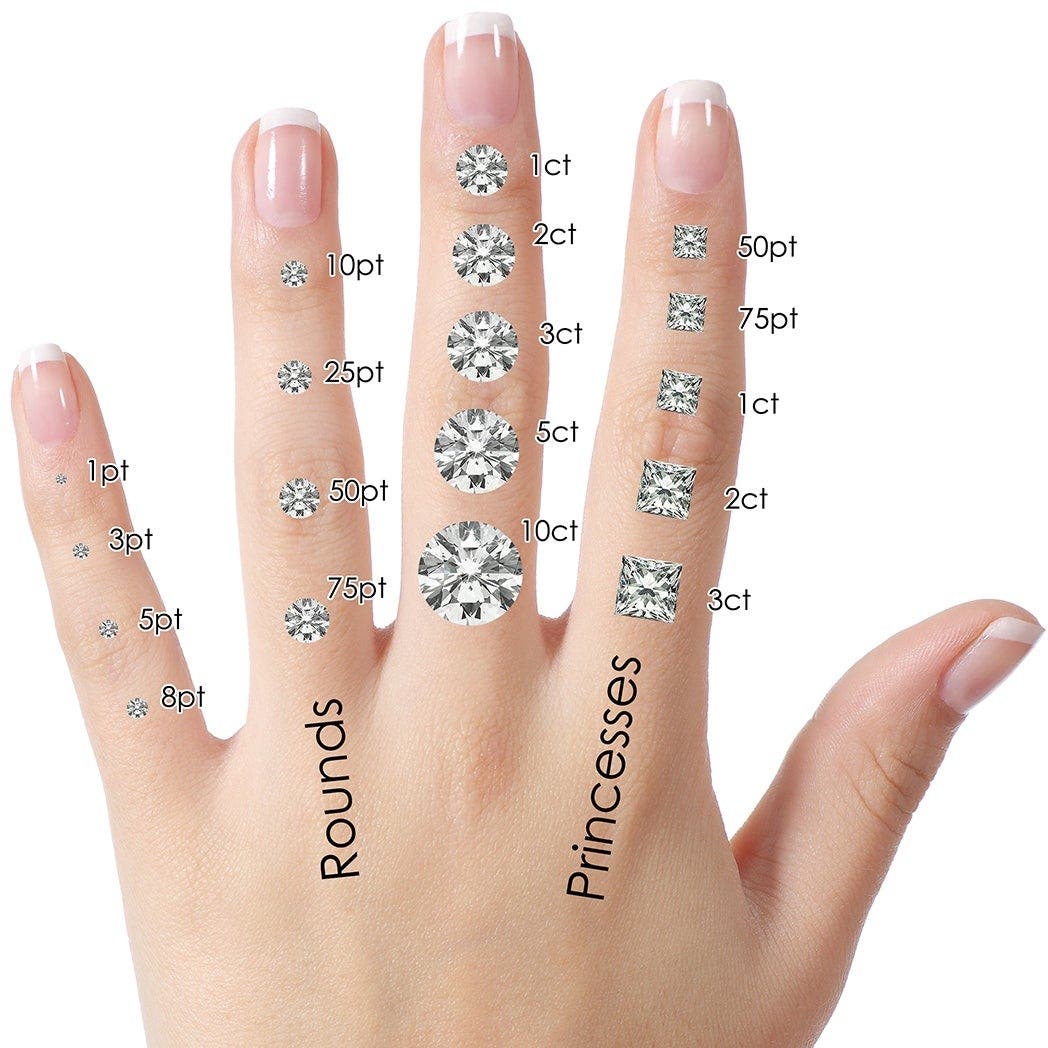
- Carat is the measurement of diamond weight. 1.00 carat is then divided into 100 points. So a quarter-carat has 25 points and is written as 0.25 carats or ¼ carat.
- Because of its rarity, one larger diamond is more valuable than a combination of small diamonds.
- Diamonds of the same weight can vary significantly in value depending on their color, clarity & cut.
Diamond Color
Diamond color is graded by letter, as shown below.
The higher the color (colorless), the more exclusive and rare the diamond becomes.
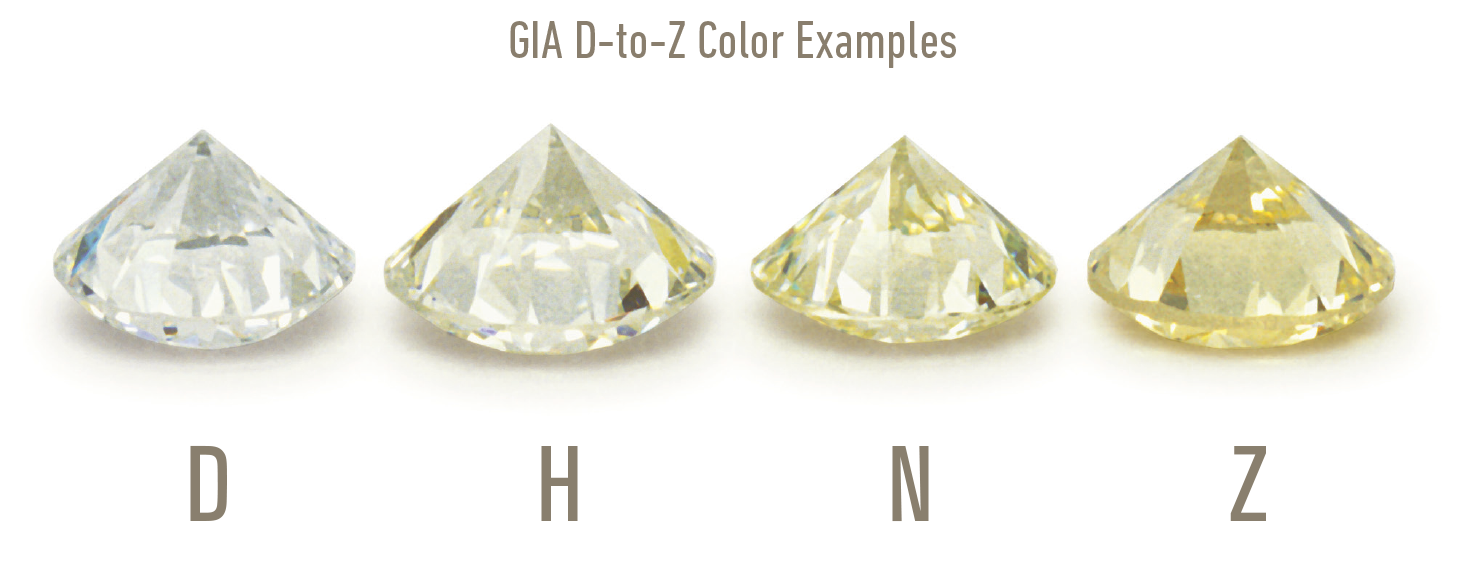
D-F |
Colorless |
G-J |
Near Colorless |
K-M |
Faint Yellow |
N-R |
Very Light Yellow |
S-Z |
Light Yellow |
Diamond Clarity
The clarity of a diamond is determined by the quantity & degree of internal birthmarks, called inclusions.
The better the clarity (Flawless, VVS) the more exclusive and rare the diamond becomes.
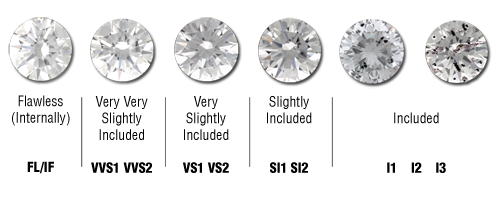
|
F - Flawless; IF - Internally Flawless |
|
VVS - Very Very Slightly Included |
|
VS - Very Slightly Included |
|
SI - Slightly Included |
|
I - Included |
Diamond Cut
- The cut is the most important factor in determining a diamond’s brilliance & beauty.
- The better the cut, the more your diamond will sparkle.
- Small dimensional differences have a dramatic effect on a diamond’s reflection of light.
- Even if a diamond has perfect clarity and color grade, if it has a poor cut, it may appear dull.
Perfectly Proportioned.
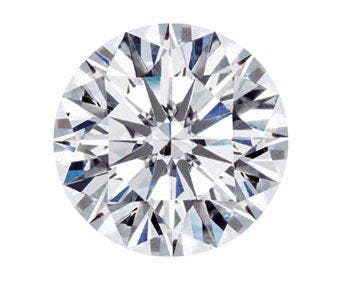
Cut to ideal proportions, virtually all light entering the stone reflects from one facet to another, then back through the top for optimal sparkle.
When a diamond is cut too deep..
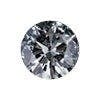
Cut too deep, light escapes through the sides of the diamond - resulting in a dull appearance & darker center.
When a diamond is cut too shallow...
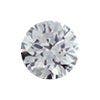
Cut too shallow, light falls out of the bottom of the diamond before it can be reflected - resulting in a watery appearance.

Diamond Certificates & Diamond Grading
A certificate gives you a detailed scientific analysis of your diamond which is done by an impartial gemological institution, not the grading of the seller.
Many different gemological labs are recognized and respected in the jewelry industry such as GIA (Gemological Institute of America), IGI (International Gemological Institute), GSI (Gemological Science International), EGL USA (Gemological Laboratory), and AGS (American Gem Society).
Diamond Certificates vary greatly in terms of accuracy & should ONLY be used as a reference when comparing various diamonds & gems.
Since grading is heavily based on opinion, various certificates can differ greatly on what grades a diamond should receive.
Our Policy on Conflict Diamonds
Please be advised that we fully support a policy of not purchasing diamonds illicitly seized and sold by rebel forces.
Since it is not currently possible for retail jewelers to verify the country of origin of diamonds, we work closely with our diamond suppliers to ensure that they do not knowingly purchase diamonds from conflict areas.
Accordingly, we ask them to commit that all diamonds sent to us have been purchased from legitimate sources not involved in funding conflict and compliance with United Nations Resolutions.
They guarantee us that these diamonds are conflict-free, based on personal knowledge and/or by written guarantees provided by the supplier of these diamonds.
Diamond Treatments
FRACTURE FILLING: Utilizes a glass-like material to "fill" a diamond to improve a stone's appearance by up to two clarity grades. Not a permanent enhancement. Full disclosure to the consumer required.
LASER DRILLING: A permanent enhancement process to remove the visibility of natural carbon inclusions using a laser to drill tiny holes (thinner than a hair) in the stone creating channels to melt or dissolve them.
COLOR ENHANCED/COATING: Applies a thin layer of material to all or part of a diamond surface, to either mask underlying color or enhance a desirable color.
Now that you have the basics, make an appointment with one of our in-store diamond specialists to answer all your important questions.